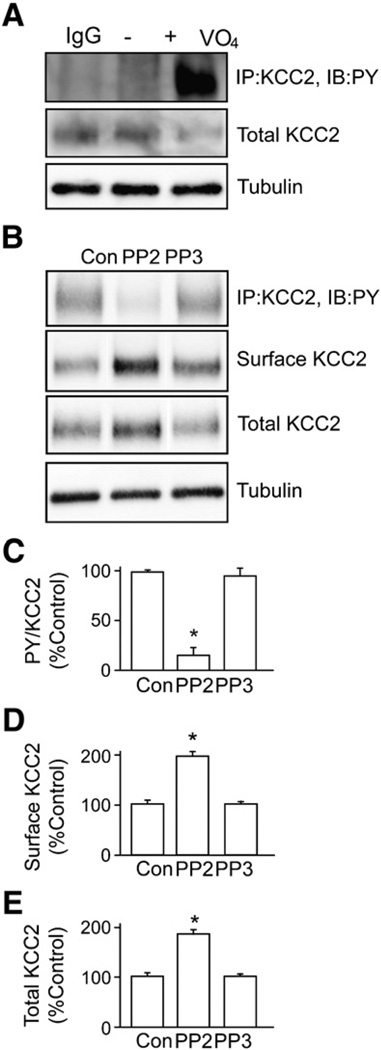Fig. 3.
Tyrosine phosphorylation of KCC2 is mediated through Src-family tyrosine kinases. A. KCC2 was immunoprecipitated from lysates prepared from hippocampal cultures pretreated with sodium pervanadate (VO4, 100 µM, 30 min). Tyrosine phosphorylation of immunoprecipitated KCC2 was detected using the PY antibody 4G10. Non-specific rabbit immunoglobulin IgG was used as a negative control for immunoprecipitation. The total amount of KCC2 was also detected using KCC2 antibody. B. An inhibitor of Src-family tyrosine kinases, PP2, or its non-active analog, PP3, was used to pre-treat neurons (20 µM, 30 min) before sodium pervanadate treatment (as above) and immunoprecipitation of KCC2 from cultured neurons followed by immunodetection using PY and KCC2 antibodies. C. The level of tyrosine phosphorylation of KCC2 was measured by calculating the ratio of the signal of PY to that of KCC2 (PY/KCC2). D. The cell surface levels of KCC2 proteins were measured using biotinylation followed by immunoblotting. E. The total amount of KCC2 was also quantified. In each experiment data were normalized to control. [*Significantly different from control condition (p<0.01; value = mean ± SEM, Student's t-test, n = 3)].

